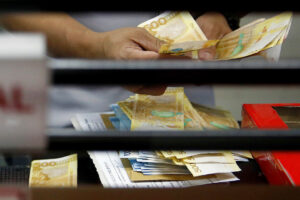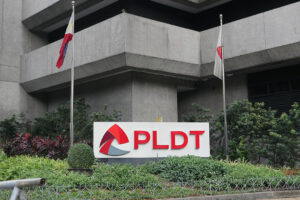PHILIPPINE INFLATION is expected to remain within the central bank’s 2-4% target until 2027, according to economists surveyed by the Bangko Sentral ng Pilipinas (BSP).
The mean inflation forecasts are expected to settle at 3.1% this year, 3.3% in 2026 and 3.4% in 2027, the survey showed, based on the minutes of the Monetary Board meeting on April 10.
“The survey respondents see upside risks from the effect of geopolitical tensions, changes in global trade policies, adverse weather conditions and upward adjustments in utility rates, transport charges and minimum wages,” the BSP said. “Downside risks are still seen from lower rice prices.”
The central bank said it expects inflation below 3% until the fourth quarter, citing the steady decline in domestic food and global oil prices.
The BSP in its April policy review slashed its inflation forecasts to 2.3% for 2025 and to 3.3% for 2026. It now expects inflation to average 3.2% in 2027.
“However, inflation is expected to rise gradually and peak in the second quarter of 2026,” it said.
As global commodity prices stabilize, inflation could ease to near 3% starting in the third quarter of 2026. “Initial baseline projections also indicate within-target inflation in 2027.”
Inflation was the slowest in more than five years in April at 1.4%, bringing the four-month average to 2%.
Risks to the inflation outlook remain broadly balanced until 2027, which would let it continue taking a “measured approach” in further policy easing.
“Monetary policy settings still appear to be relatively tight,” it said. “The timing and magnitude of further monetary easing will be determined on a meeting-by-meeting basis.”
The Monetary Board resumed its easing cycle last month with a 25-basis-point (bp) rate cut to 5.5%. It has lowered borrowing costs by 100 bps since August last year.
BSP Governor Eli M. Remolona, Jr. earlier said they are open to cutting rates by 75 bps more this year amid a favorable inflation outlook.
Meanwhile, the central bank said it expects economic growth to settle at the lower end of the government’s 6-8% target this year until 2027.
“Domestic economic activity may benefit from disinflation but faces downside risks,” it added.
The economy grew by a weaker-than-expected 5.4% in the first quarter from 5.9% a year ago.
Central bank estimates showed “slightly lower” growth forecasts for 2025 compared with its forecast in February.
“The downward revision could be attributed to the higher real policy rate, which outweighed the impact of the decline in oil prices,” the BSP said.
It also flagged challenges from the external environment that could dampen global growth “and pose a downside risk to domestic economic activity.”
“Nevertheless, recent activity indicators suggest domestic demand will be supported by low inflation, improvements in real wages and labor market conditions and the gradual easing of monetary policy settings,” it added.
Meanwhile, Economic Secretary Arsenio M. Balisacan said it is “too early” to revise the government’s 6-8% growth target for 2025-2028 despite global uncertainties and lackluster first-quarter growth.
“My sense is that it’s too early to give up 6-8% for the medium term, meaning 2025-2028,” he told reporters. “We have to be ambitious.”
“We have been left behind so far by our neighbors. If you don’t push very hard to work on a more rapid growth, you’ll always be [the last],” he added.
Lowering the upper end of the goal is possible, but Mr. Balisacan said that could affect budget assumptions.
The Development Budget Coordination Committee is expected to review macroeconomic assumptions later this month.
The Philippine economy could still growth by 6-6.5%, Reinielle Matt M. Erece, an economist at Oikonomia Advisory and Research, Inc., said in a Viber message.
“This is as investments and trade deficits drag on growth, as long as trade uncertainties persist,” he said. “Although trade tensions have eased relative to what it was last April, unstable trade policies can still drag investment inflows and export growth.”
“A downward adjustment on the growth targets is something that is expected given the global environment,” he added.
The best course of action for the country is “internal housekeeping” pending tariff negotiations between the Philippines and the US Trade Representative, Mr. Balisacan said, citing the country’s limited political and economic clout.
“How we all end up remains uncertain, and for so long as that uncertainty stays, the ability of investors to make these commitments and investments, whether in the Philippines or elsewhere, is muted,” he added. — Luisa Maria Jacinta C. Jocson and Aubrey Rose A. Inosante






